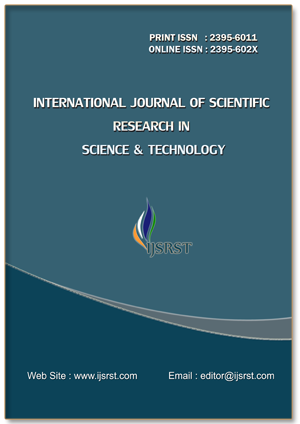Recent Developments in Piezoresistive Pressure Sensors: Materials, Architectures, and Applications (2018–2024)
DOI:
https://doi.org/10.32628/IJSRST25121226Keywords:
Piezoresistive Sensor, Pressure Sensor, MEMS, E-Skin, Flexible Electronics, Graphene, Silicon Carbide, Polymer Nanocomposite, Micro-structured Elastomer, Crack-Based Sensor, Temperature Compensation, Harsh EnvironmentAbstract
Piezoresistive pressure sensors (PPS) remain the workhorse of pressure sensing across industries owing to their simple readout, CMOS-compatibility, and wide dynamic range. Over the past five years, PPS research has accelerated along three vectors: (i) materials innovation spanning silicon-on-insulator (SOI), wide–band-gap semiconductors (SiC), 2D materials (graphene, MoS₂), MXenes, metal–organic frameworks (MOFs), and conductive polymer nanocomposites; (ii) micro/nano-architectures that amplify gauge factor via crack engineering, hierarchical porosity, and microdome/pyramidal elastomeric structures; and (iii) application-driven designs for flexible/wearable e-skins, harsh environments (≥300 °C), and miniature biomedical catheters/microfluidics. This review synthesizes developments from roughly 2018–2024, covering device physics, fabrication, performance benchmarks (sensitivity, limit of detection, drift, hysteresis, bandwidth), temperature compensation, reliability, and system-level integration. We conclude with open challenges—standardized benchmarking, long-term stability, temperature/creep mitigation, and sustainable manufacturing—and outline promising research directions including printable PPS, multi-modal fusion, AI-assisted calibration, and biodegradable/implantable platforms.
📊 Article Downloads
References
H. Lu et al., “Porous reduced graphene oxide@multi-walled carbon nanotubes/polydimethylsiloxane piezoresistive pressure sensor for human motion detection Mater. Today Nano, (2024) DOI: https://doi.org/10.1016/j.mtnano.2024.100512
Z.-H. Zhang et al., “Temperature-responsive resistance sensitivity controlled by L-ascorbic acid and silane co-functionalization in flame-retardant GO network for efficient fire early-warning response Chem. Eng. J. (2020) DOI: https://doi.org/10.1016/j.cej.2019.123894
R. Qin et al., “
S. Rajapandi et al.Two-dimensional transition metal carbides and/or nitrides (MXenes) and their applications in sensors Mater”. Today Phys. (2021)
Ziziphus mauritiana-derived nitrogen-doped biogenic carbon dots: eco-friendly catalysts for dye degradation and antibacterial applications Chemosphere (2023)
S. Arumugam et al., Heterogenous copper(II) schiff-base complex immobilized mesoporous silica catalyst for multicomponent biginelli reaction J. Organomet. Chem. (2023) DOI: https://doi.org/10.1016/j.jorganchem.2023.122804
M.-Y. Liu et al., “Advance on flexible pressure sensors based on metal and carbonaceous nanomaterial Nano Energy” (2021) DOI: https://doi.org/10.1016/j.nanoen.2021.106181
D. Tan et al., Recent advances in MXene-based force sensors: a mini-review RSC Adv. (2021) DOI: https://doi.org/10.1039/D1RA02857J
W. Chen et a., “ Progress in achieving high-performance piezoresistive and capacitive flexible pressure sensors: a review J. Mater. Sci. Technol. (2020) DOI: https://doi.org/10.1016/j.jmst.2019.11.010
G. Zhao et al., “ Transparent and stretchable triboelectric nanogenerator for self-powered tactile sensing Nano Energy(2019) DOI: https://doi.org/10.1016/j.nanoen.2019.02.054
K.S. Aryamol et al., “Recent advances of carbon pathways for sustainable environment development Environ. Res. (2024) DOI: https://doi.org/10.1016/j.envres.2024.118513
Downloads
Published
Issue
Section
License
Copyright (c) 2025 International Journal of Scientific Research in Science and Technology

This work is licensed under a Creative Commons Attribution 4.0 International License.
https://creativecommons.org/licenses/by/4.0




